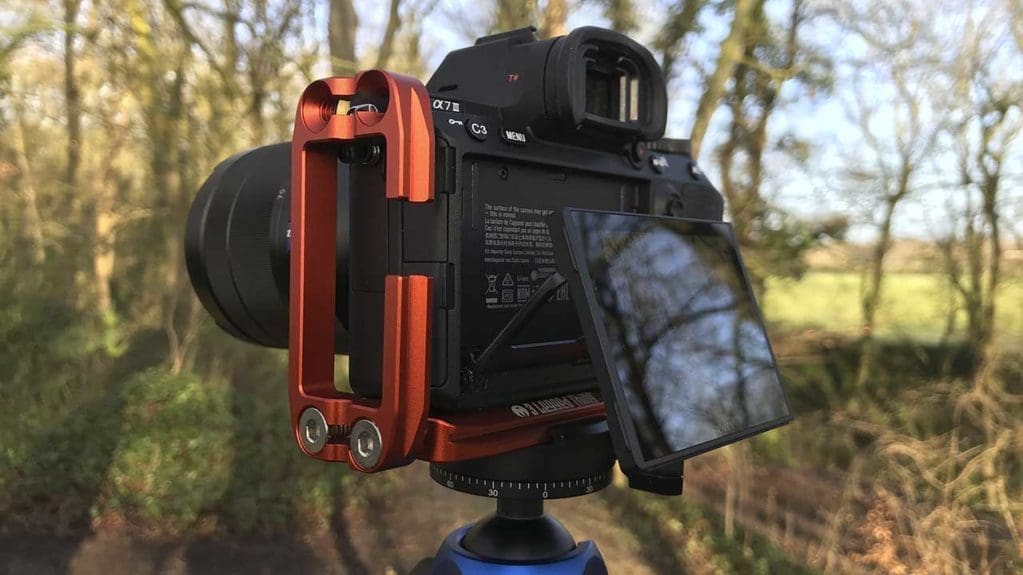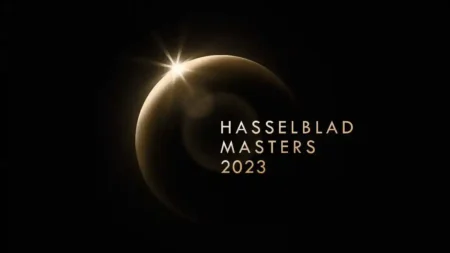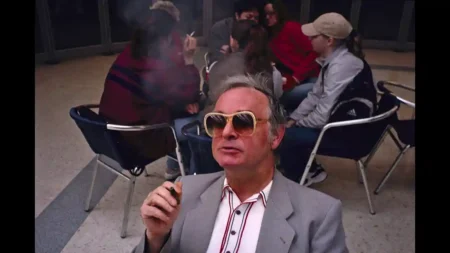Bolting an L shaped piece of metal around your camera may seem an odd practice, but it’s something that’s been going on for years, and its popularity is growing. But why?
Essentially it makes life easier. It enables you to flip your camera from landscape to portrait orientation while retaining the position of the focal plane and horizon, as well as keeping the camera level.
Why is this good? Just pop your camera onto your tripod and then flip it to portrait orientation. Now move your camera left or right to compose a shot and you’ll see the parallax effect.
As the sensor is no longer directly above the tripod head’s pivot point, there’s a significant difference in the composition every time you move the camera.
It may seem like a small thing, but having an L-bracket to retain the sensor position and overcome this major shift in composition will make a significant difference to your photography and save you loads of time.
In a way, an L-bracket is a non-essential, essential. It’s something you can live without until you have one!
In this post, we’re looking at 3 Legged Thing’s Ellie, a universal L-bracket that packs in some interesting new features that take it well beyond the normal uses for an L-bracket. I’ll come on to those later.
What does a camera L-bracket do?
Far more than you would think.
It all starts by bolting the bracket to the base of your camera so the L shape wraps around the body. It’s ready to use in exactly the same way as any quick release plate. Except it works as a release plate on two sides of your camera.
Many L-brackets are camera specific, giving them a good snug fit around the body. Recently we’ve seen Zelda by 3LT which has been specially made for Nikon Z series cameras.
3LT’s Ellie is a little more flexible with the cameras it will fit. As a universal L-bracket it fits most DSLR, mirrorless or premium compact cameras.

Ellie’s design enables you to adjust the camera’s position on the L-bracket with two bolted sliders that alter the base’s length to match that of your camera. Then there’s a removable upright that can be flipped for a best fit depending on the position of your camera’s ports and strap lugs.
As a universal L-bracket Ellie can be adjusted for an optimal fit to work with any ports, slots, lugs and buttons – depending on your camera and your way of working.
An example of this flexibility is with the Fuji X100F which has a slightly tricky button arrangement. Standard L-brackets block the focus selection button, but by using Ellie, you can flip the upright bracket so the gap is positioned so the focus selection button is free.
Likewise, if you’re using a Sony A7 III to film and have an ATOMOS monitor attached, then you can flip the slot position to the back top so that the cables can be neatly positioned and secured.
Also, an ATOMOS unit can be attached by friction arm to one of the two 1/4-inch threads at the top of the upright.
Once the bracket has been adjusted to your needs and all bolts are firmly retightened, it can then simply be secured into your tripod head’s clamp. Then all you need to do is make sure it’s level, and you’re ready to shoot.
With Ellie in place, if you want to switch from landscape to portrait orientation, just release the clamp and flip the camera on its side. Resecure the clamp and you’re done. No need to worry about re-levelling the camera as it’s at the same angle as it was in landscape orientation.
You may think that this doesn’t sounds as quick or easy as releasing the tripod head and flipping it down 90º. But, aside from not having to worry about getting the level right again, with the L-bracket, you’ll find it easier to compose your shot and match the shooting position of your landscape format images.
Again, that’s all due to the sensor remaining above the tripod head’s central pivot point rather than being offset. This is handy when shooting landscapes and architecture, but it really comes into its own in the studio.
Firstly, as the sensor stays above the pivot point of the tripod head composition is far easier. Then there’s the weight distribution, the whole weight of the camera is sat directly on top of the tripod rather than off to one side. If you’re shooting tethered, or have accessories wired in, and the ports are in use, it’s easier to secure the cables so they don’t accidentally get knocked as you, or others, move around the studio.
Finally, and most importantly, you can quickly swap from landscape to portrait and back without the need for major re-composition as the camera’s position and height will remain much the same.
An L-bracket has far more to offer
The basics of shooting with an L-bracket, once pointed out, are obvious, but as I said at the outset, it’s all about the non-essential, essentials.
For example, there’s two handy 1/4-inch threads, a feature that will appeal to many videographers as well as stills photographers. These threads can be used to bolt on an accessory such as a friction arm for an audio recorder, screen, mic or lamp.
Another bonus of using an L-bracket is that it gives your camera some protection from knocks and bumps. After all, you’ve effectively got a metal guard on two sides.

And it doesn’t mean you can’t use a strap as Ellie has easy-to-access strap loops at either end, so you can attach your strap to either the camera or the L-bracket or a combination of both.
An issue that many of the latest cameras can have with L-brackets is that they block the access to tilting and articulating screens. It’s well worth checking screen access with an L-bracket attached. The latest L-brackets such as Ellie feature tapered edges at the back to enable better screen access which makes a big difference.
Not all L-brackets are made the same and Ellie, being universal, has a clever trick up its sleeve. Unbolt the upright and flip it over so it’s pointing down rather than up, then bolt-up tight.
Now flip you tripod head down 90º and attach Ellie to the base of your camera or a telephoto lens and you have a long lens rocker, ideal for shooting wildlife or sports.
An L-bracket is for life
An L-bracket may on the surface look simple, it is after all just an L-shaped bit of metal that you bolt around your camera. But Ellie is carefully designed to hold your camera securely so it doesn’t slip on the tripod head with large, heavy lenses.
In addition, 3 Legged Thing is well aware that many of us travel with our cameras and we have to pack down our kit as small as possible. To this end, Ellie is made from two pieces that bolt together. As a result, the side screws can be removed and it can be packed flat, making it easy to slip into a side pocket.
So while an L-bracket may at first seem like a non-essential, it has several benefits.
You can find out more about L-brackets at 3leggedthing.com and if you want to try one out then pop along to their stand no. E71 at The Photography Show.



